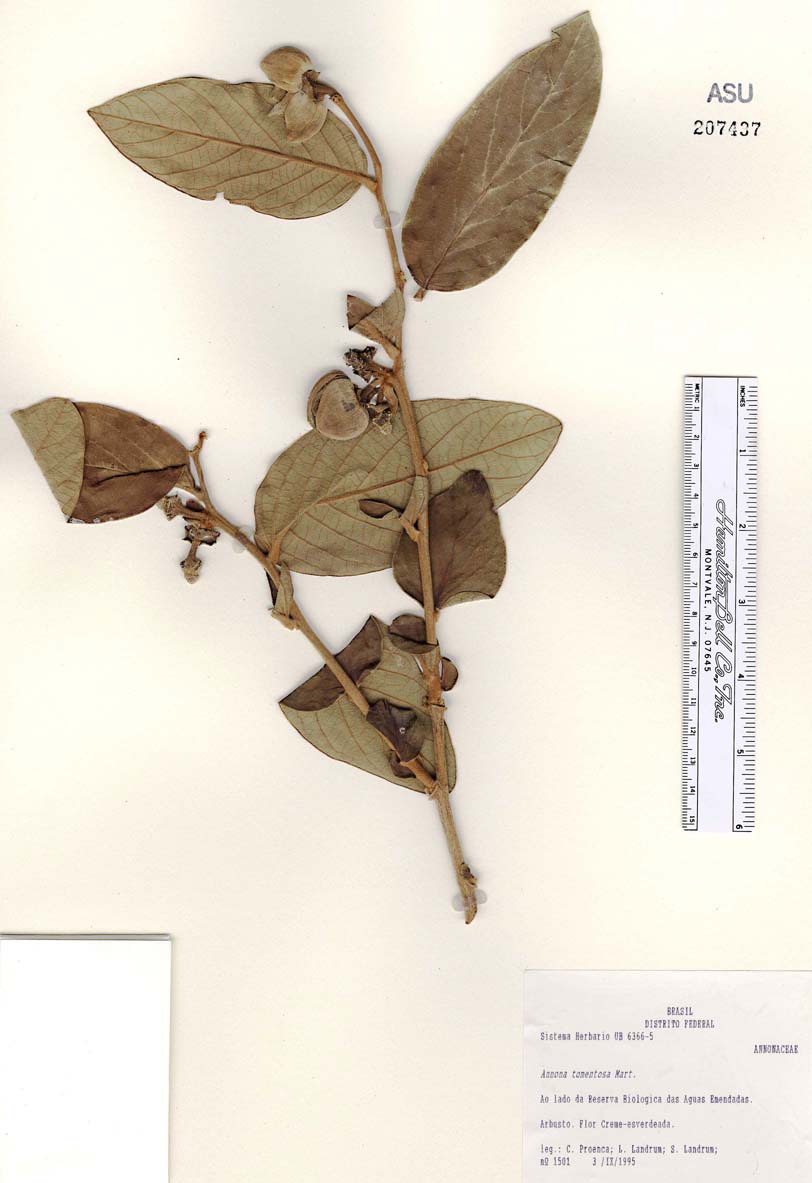Annona
|
Family: Annonaceae |
Trees or shrubs , taprooted; trunks buttressed or not buttressed at base. Bark thin, mostly broadly and shallowly fissured, scaly, fissures anastomosing. Shoots slender, stiff, terete; lenticels raised; buds naked. Leaves persistent or deciduous to late deciduous. Leaf blade leathery or membranous, glabrous to pubescent. Inflorescences axillary or supra-axillary, occasionally from axillary buds on main stem or older stems, solitary flowers or fascicles; peduncle bracteolate. Flowers: receptacle convex to ±globose or elongate, elevated; sepals deciduous, 3(-4), smaller than outer petals, valvate in bud; petals 6(-8) in 2 whorls, usually fleshy, those of outer whorl larger, valvate in bud, those of inner whorl more ascending, distinctly smaller or reduced, rarely absent, valvate or imbricate in bud; nectaries present as darker-pigmented, usually corrugate zones adaxially near petal bases; stamens very numerous, packed into ball, club-shaped, curved; connective dilated, hooded or pointed beyond anther sac; pistils numerous, sessile, partially connate to various degrees with at least stigmas distinct; ovules 1(-2) per pistil; style and stigma club-shaped or narrowly conic. Fruits fleshy syncarps, 1 per flower, usually ovoid to nearly globose, surface variable depending on orientation, structure, and relative connation of pistil apices. Seed usually 1 per pistil, ovoid to ellipsoid, beanlike, coat tough, margins various, narrow. x =7. |

